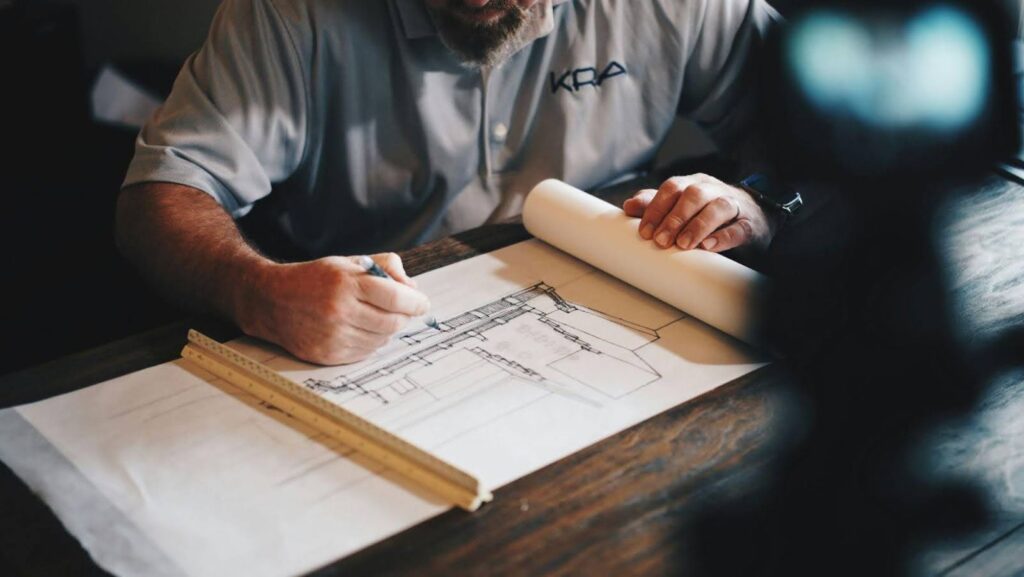Selecting the right architect for a custom luxury residence is one of the most critical decisions a homeowner or developer can make. High-net-worth clients face unique challenges, including understanding complex fee structures, verifying experience with multi-million-dollar projects, and ensuring that the architect can deliver a high level of creativity while adhering to technical constraints.
This challenge is particularly pronounced in Los Angeles luxury properties, where bespoke innovation is now the expected standard. Firms such as The Fitzgerald Group, renowned for their expertise in the buying and selling of real estate, highlight the importance of partnering with architects who have experience with complex, high-end projects and a proven track record.
Defining the Project
The first step in selecting the right architect is establishing a comprehensive project brief that outlines both functional and aspirational requirements. This document should cover the following points:
- Spatial needs for primary and ancillary structures.
- Desired materials, finishes, and bespoke elements.
- Integration of advanced systems, including smart home technology and energy efficiency measures.
- Sustainability targets, such as LEED or Passive House certification.
Long-term operational costs and maintenance expectations.
A clearly defined project brief provides a roadmap for the architect and ensures alignment on scale, complexity, and technological ambitions from the beginning. Ambiguity at this stage often leads to misunderstandings, redesigns, and budgetary issues later in the process. Establishing technical and aesthetic parameters upfront allows architects to develop realistic proposals that reflect both feasibility and luxury expectations.
Clients must also clarify the full scope of the project, including any ancillary structures such as guest houses, subterranean garages, recreational facilities, or professional-grade athletic courts. Each addition increases regulatory complexity, site planning requirements, and structural considerations. Defining the scope early provides a definitive benchmark for evaluating design proposals and prevents scope creep during later stages of development.
Vetting Architects

Evaluating potential architects requires more than reviewing portfolios and past projects. A thorough vetting process includes requesting professional credentials, liability insurance, and confirmation of no prior litigation related to design or project management failures.
Examine experience with similar structural systems, complex facades, or high-value materials. Architects with specialization in relevant niches are more likely to deliver successful outcomes. This process ensures that the selected architect has both the creative vision and technical competence necessary to manage a complex luxury build.
Technical Proficiency
Architects working in luxury real estate must demonstrate mastery over technical aspects critical to complex residential construction. Evaluate structural engineering capabilities, integration of advanced mechanical, electrical, and plumbing systems, and experience with specialized materials such as ultra-high performance concrete (UHPC) or structural glass.
Review past construction drawings to assess clarity and completeness and confirm access to skilled sub-consultants and the use of Building Information Modeling (BIM) software for real-time coordination, cost estimation, and conflict detection. Assessing technical proficiency ensures that conceptual designs are visually striking and feasible within project parameters.
Communication and Collaboration
A luxury residential project often spans multiple years, making communication and collaboration between client and architect crucial. Evaluate potential architects for their ability to listen and translate abstract ideas into buildable concepts, their conflict resolution skills, and their collaborative work style.
Establish a clear reporting structure, including points of contact and seniority levels, as well as structured feedback loops and formalized communication protocols. Strong communication minimizes misunderstandings and allows the client to remain informed throughout design and construction. Architects who prioritize collaboration enhance efficiency and contribute to a more satisfying project experience.
Design Philosophy Alignment
Aligning an architect’s design philosophy with the client’s aesthetic vision is essential to successful collaboration. Consider the architect’s approach to light, materials, spatial volume, and site integration, as well as their balance between stylistic creativity and functional practicality.
Design philosophy alignment reduces friction during decision-making and ensures the final result embodies both the client’s personal taste and the project’s technical requirements. Architects who respect site-specific constraints and environmental context elevate the property into a distinctive and lasting statement of luxury.
Contracts and Compensation
Contracts define the professional and financial relationship between the client and architect. Key considerations include:
- Scope of work with clearly defined deliverables for schematic design, design development, and construction documentation.
- Fee structures, whether a percentage of construction cost, fixed fee, or hourly rate.
- Provisions for change orders and unexpected project adjustments.
- Intellectual property rights.
- Liability clauses.
- Dispute resolution processes.
- Engagement of legal counsel experienced in construction contracts.
Clear contractual terms prevent disputes, protect the client’s investment, and provide a structured framework for the project. Ambiguity in contracts often leads to payment disagreements or legal complications.
Maintaining Oversight
Even with the right architect, active client engagement throughout the project is critical. This involves regular meetings and site inspections, reviewing project milestones for adherence to the brief, monitoring budget, timeline, and design integrity, and coordinating with sub-consultants and contractors.
Maintaining oversight ensures that design intent is preserved, technical requirements are met, and the project progresses smoothly. Lack of involvement can result in misalignments between vision and execution, increasing the risk of costly revisions.
Establishing a Lasting Architectural Legacy
The ultimate choice of an architect defines the quality, functionality, and market standing of a luxury property. A disciplined, methodical selection process safeguards the integrity of the residence while maximizing long-term value. Homes created through careful architect selection transcend basic functionality to become highly refined works of art and investment assets.
A successful partnership results in a home that exemplifies sophistication, technical excellence, and enduring style. The process requires diligence, research, and thoughtful evaluation, but the outcome is a property that reflects the highest standards of luxury living.


More Stories
What Is The Ideal Humidity Inside A Home
Hygge Interior Design: Creating Comfort and Coziness in Your Home
Inside The Home Alone House: A Sneak Peek into Christmas Nostalgia